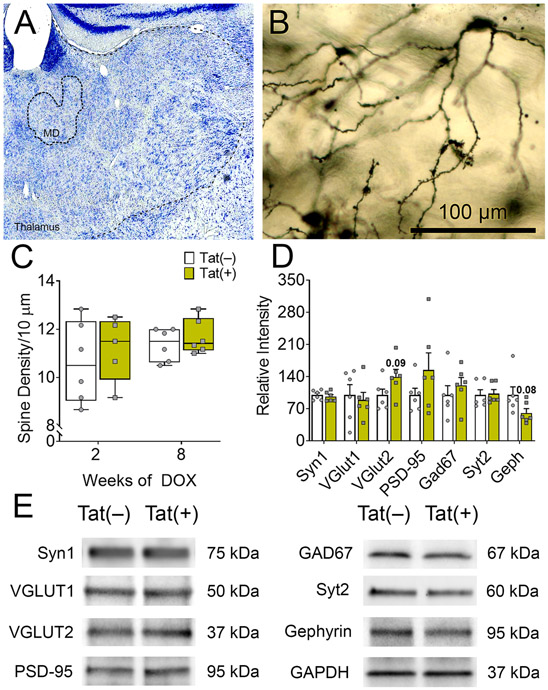Fig. 6.
HIV-1 Tat does not affect MD thalamic stellate neuronal spine density or synaptic markers. In the thalamus, synaptodendritic morphology was measured after 2 or 8 weeks of Tat exposure. Representative Nissl staining showing the approximate left MD thalamic nucleus (MD) (A). Appearance of Golgi-impregnated stellate neurons in the MD thalamus (although dendritic spines populate the more distal dendrites, the cell body of origin is shown instead to better confirm its identity as a MD thalamic stellate neuron) of Tat(−) (B) and Tat(+) (not shown) mice displayed similar morphology and showed no differences in dendritic complexity (see C). No genotypic differences in dendritic spine density were seen in the MD thalamus after 2 or 8 weeks of Tat exposure (C). In the whole thalamus, Tat(+) did not significantly alter excitatory or inhibitory postsynaptic connections after 8 weeks of DOX (D–E). Data are presented as mean ± SEM, multiple neurons (≥ 6) were sampled in each of n = 5–7 mice per group; dashed-lines, approximate borders of the MD thalamus and thalamus.

